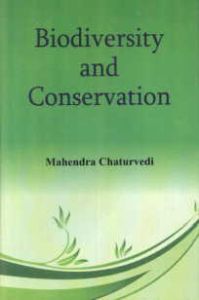
Contents: Preface. 1. Bio-diversity and public relations practice. 2. The challenge of diversity. 3. The coastal environment and pollution impacts. 4. Research in human ecology. 5. Returning to ecology: an ecosystem approach to understanding the city. 6. Environment and globalization: understanding the linkages. 7. Emerging trends in biodiversity conservation. 8. Biodiversity and ecosystem functioning: maintaining natural life. 9. Biodiversity and ecosystem functioning: basic principles. 10. Biodiversity conservation in tropical agroecosystems. 11. Intensification, food production, and the conservation of biodiversity. 12. Air pollution and biodiversity: a review. Bibliography. Index.
"Despite much recent attention, biodiversity conservation and protected area management remain, in large part, subservient issues in the world today: they need to continuously adapt themselves to larger' issues of the global political economy to remain politically acceptable. Based on this assumption, we argue that it is possible to identify three major trends in conservation and protected area management that are likely to influence policy and practice for a long time to come.
Although the influence of these large-scale global political and economic trends on biodiversity conservation and protected area management is not a new phenomenon, participants in the conservation debate tend to loose sight of this bigger picture. By calling attention to these trends, we aim to enhance the understanding and appreciation of macro-social, economic, and political dynamics - both constraints and opportunities that impinge on conservation and development. Such an understanding could, in turn, enhance the success of initiatives that aim to improve conservation of biodiversity and protected areas management.
Studies on plants have been particularly revealing and support results from recent theoretical models which predict that decreasing plant diversity leads to lower plant productivity. These models predict that diversity and composition are approximately equal in importance as determinants of ecosystem functioning. Two mechanisms have been identified to explain why levels of ecosystem functioning increase with increasing biodiversity. First is the sampling effect. When the pool of species available in a region contains individual species that vary in productivity and other contributions to ecosystem functioning, then species-rich ecosystems have a higher probability of containing species with high levels of functioning. Second is the complementarity effect. This occurs when increasing diversity results in increasing numbers of species that are complementary rather than competitive in their use of resources, exploiting different niches, such as rooting depths, and allowing more effective use of available resources." (jacket)